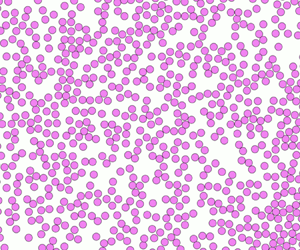Published online by Cambridge University Press: 29 February 2024

In two-fluid simulations of gas–solid fluidised beds, the gaseous phase and the particulate phase are modelled as continuous media. The stress exerted by the particulate medium on the container walls should be modelled to predict accurately the bed dynamics. This paper addresses the modelling of sliding particle–wall contacts in two-fluid simulations, based on reference simulations coupling computational fluid dynamics with the discrete element method (CFD-DEM), in which the individual movement of the particles is tracked. The analysis of the CFD-DEM highlights the complex near-wall behaviour of the particles, which is not reproduced by two-fluid models. Nevertheless, the particle–wall shear stress can be expressed based on the total granular pressure within the first cell off the wall. The model is validated for the two-fluid simulation of a bubbling gas–solid fluidised bed of olefin particles in the dense-fluidisation regime.